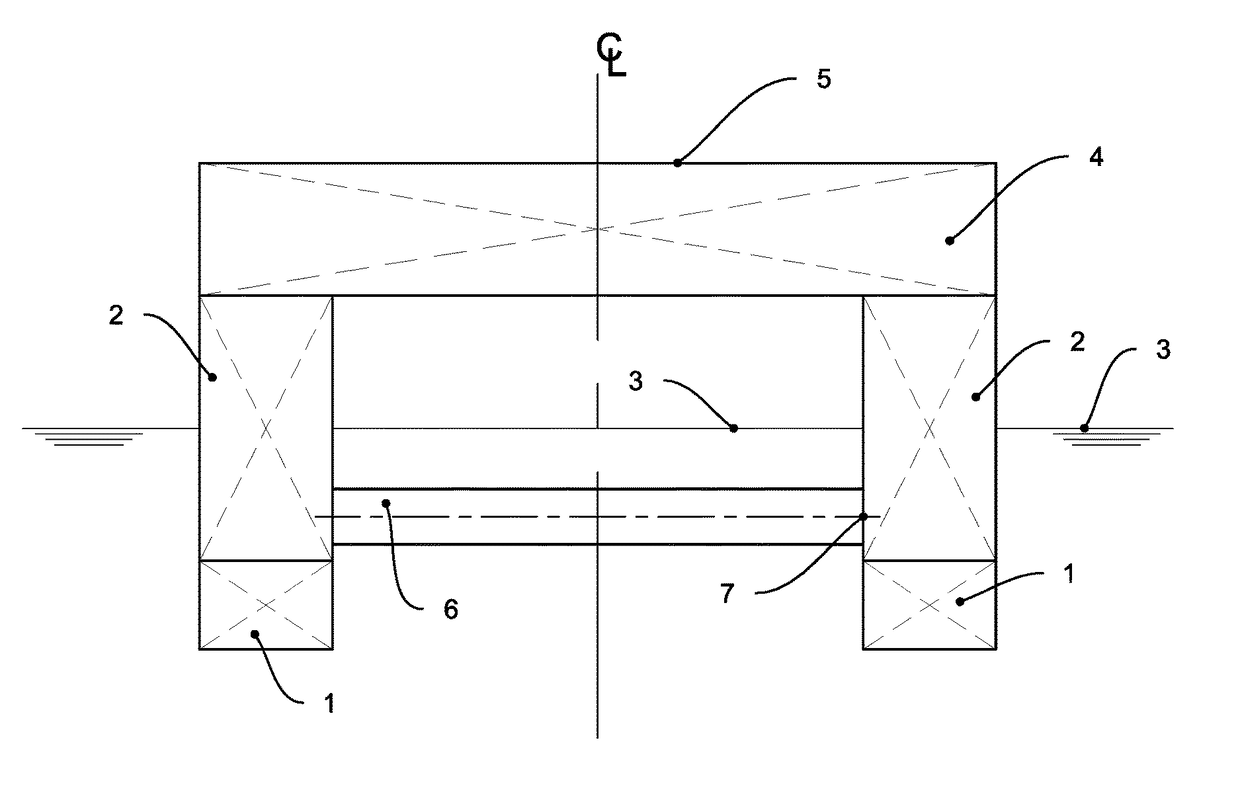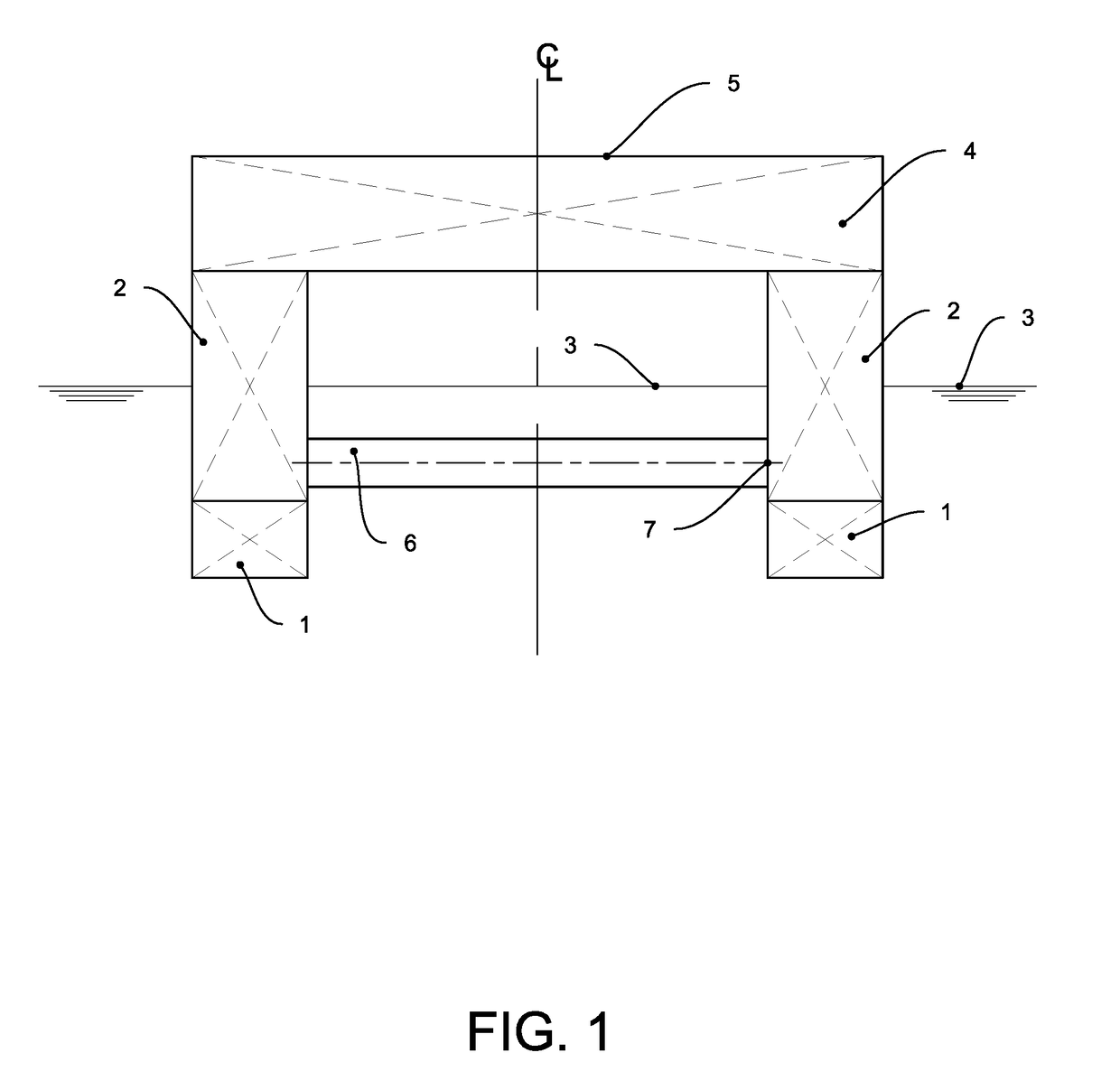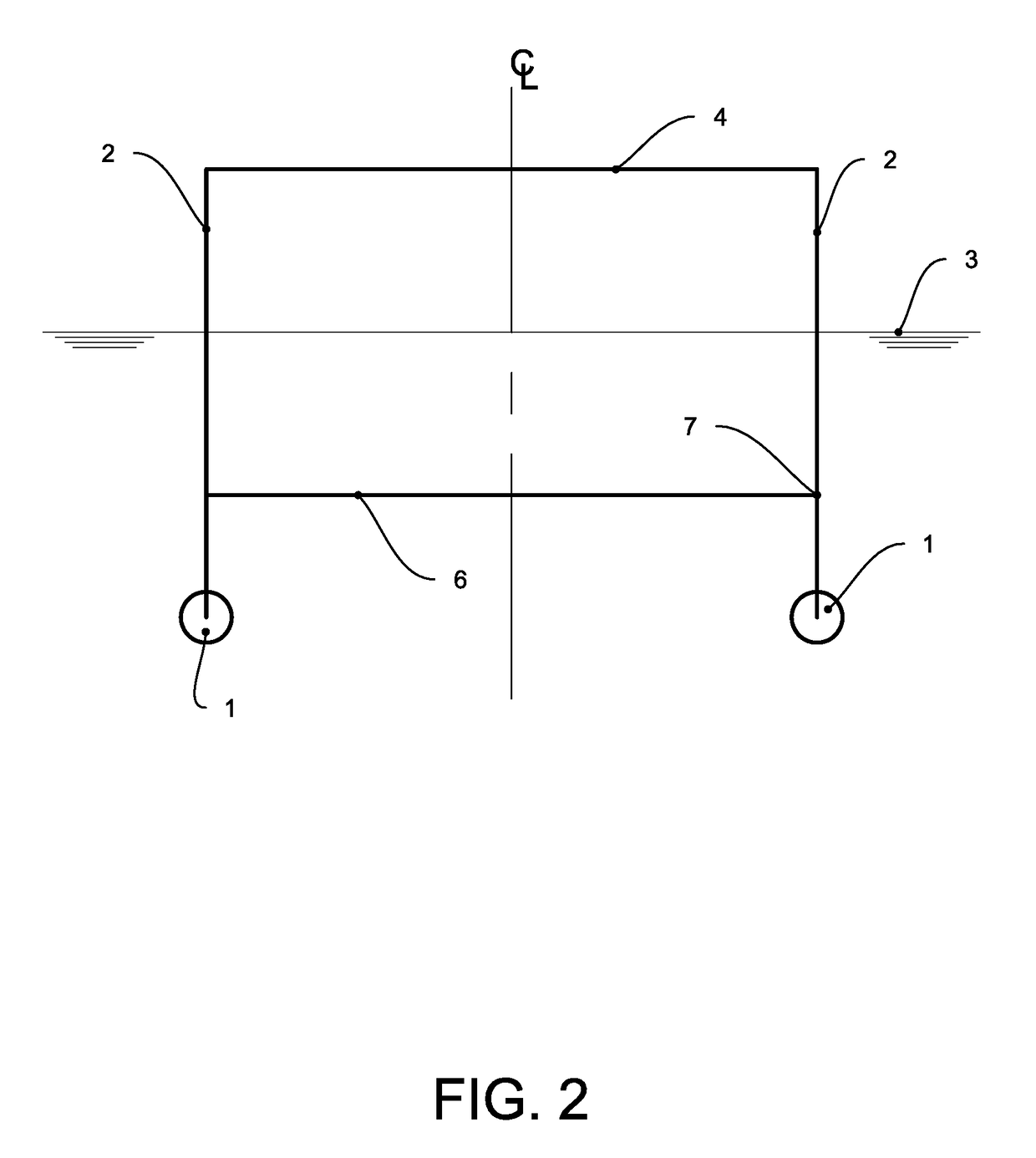Bending stiffness reducer for brace to hull connection
a technology of reducing force and axial load bearings, which is applied in the direction of hull parts, special-purpose vessels, vessel construction, etc., can solve the problems of increasing the bending load, and affecting the bending effect so as to reduce the stiffness of the axial load bearing member and be more flexible in bending
- Summary
- Abstract
- Description
- Claims
- Application Information
AI Technical Summary
Benefits of technology
Problems solved by technology
Method used
Image
Examples
Embodiment Construction
[0043]Referring now to the invention in more detail, a typical structural arrangement is shown in FIG. 1, showing a semi-submersible in section view and FIG. 2, shows a semi-submersible in section view in a diagrammatic representation. A semi-submersible, or more particularly the main hull structure of a semi-submersible is typically composed of a series of pontoons 1, columns 2, and an upper box structure 4. The hull of the semi-submersible is buoyant, operating at a waterline 3 approximately as indicated. The main deck 5 structure varies in its arrangement depending upon the intended use of the semi-submersible such as drilling, oil production, construction support, accommodations, etc. The brace structure 6 is shown, in this case, the standard way with built-in, or fixed ends 7.
[0044]For better understanding, FIG. 3 shows a semi-submersible in profile view, showing the same elements as in the section view, pontoons 1, columns 2, operating waterline 3, deck box 4, main deck 5 and ...
PUM
 Login to View More
Login to View More Abstract
Description
Claims
Application Information
 Login to View More
Login to View More - R&D
- Intellectual Property
- Life Sciences
- Materials
- Tech Scout
- Unparalleled Data Quality
- Higher Quality Content
- 60% Fewer Hallucinations
Browse by: Latest US Patents, China's latest patents, Technical Efficacy Thesaurus, Application Domain, Technology Topic, Popular Technical Reports.
© 2025 PatSnap. All rights reserved.Legal|Privacy policy|Modern Slavery Act Transparency Statement|Sitemap|About US| Contact US: help@patsnap.com



